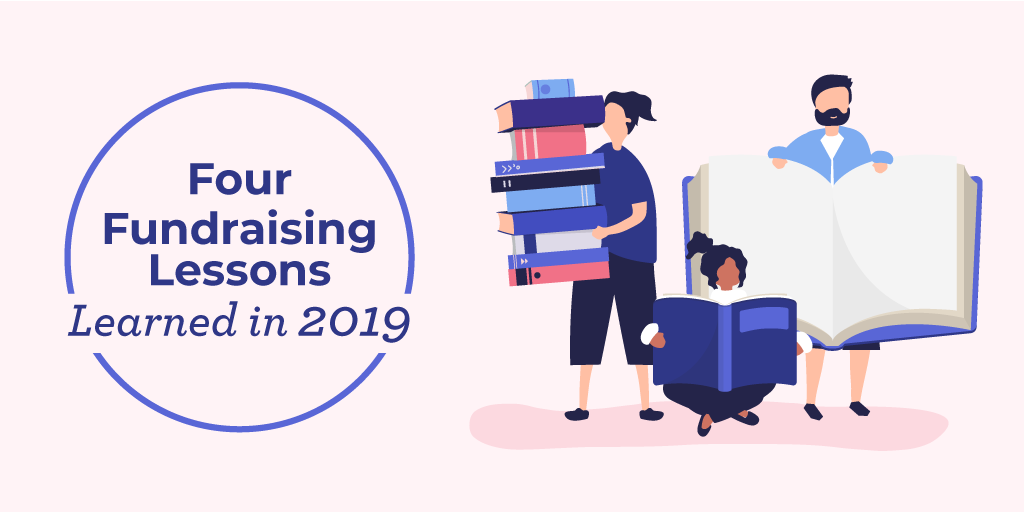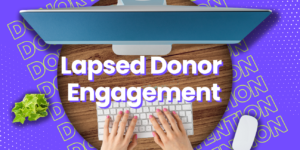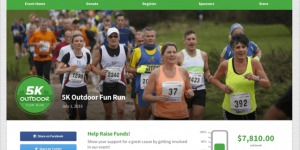In 2019 nonprofits have been forced to get creative and re-evaluate their fundraising strategy. The fundraising landscape is changing at a shocking pace. Individual giving, donor retention, and donor acquisition rates continue to trend downwards.
These developments have some nonprofits pressing the panic button, while others insist on treading water with the same methods they’ve used for years. But the organizations that are thriving have adjusted their strategies around the lessons nonprofits learned in 2019.
And we’re not just talking about things like a mobile-friendly website or offering several payment options. Let’s be honest. If you’re not doing these things yet, you’re way behind!
The lessons nonprofits learned in 2019 go further. They’ve forced us to take a hard look inside and re-evaluate the way we approach fundraising all together!
The following takeaways are not simple tricks we’ve seen nonprofits use the past year. They’re ways that we’ve seen organizations adjust their strategies to address the problems of modern fundraisers.
It’s not too late for you to take what nonprofits learned in 2019 and apply it to your own fundraising strategy. Here’s what you can learn from the success of your peers!
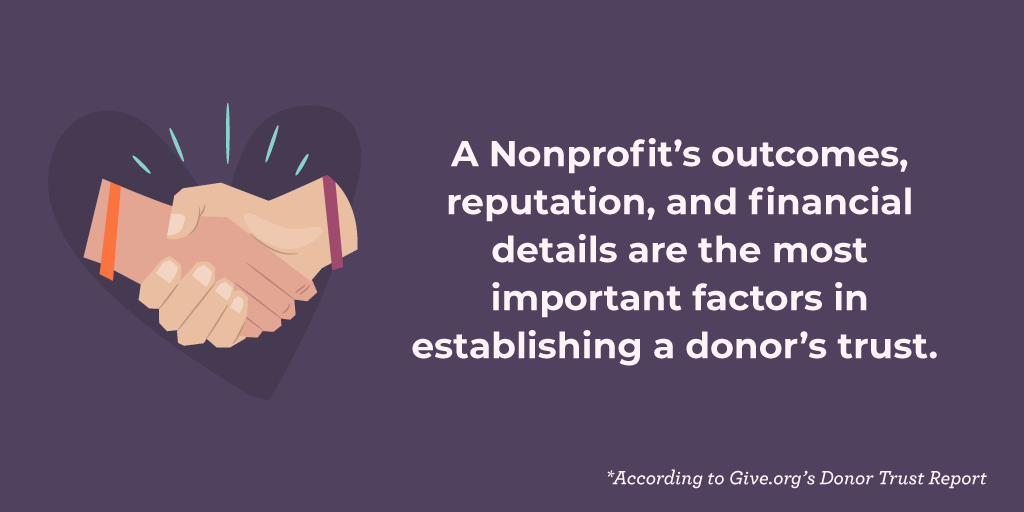
1. Increased Importance of Transparency
Skepticism in our society seems to be at an all-time high. Media outlets rush to publish a story before all the facts are in. Financial institutions have been subjected to data-breaches. And let’s not forget that Mark Zuckerberg testified before congress regarding Facebook’s data-mining practices and privacy concerns.
In a world where everyone puts a piece of tape over their laptop’s webcam because you can’t be sure if someone is watching you, transparency is critical!
But this poses a problem for nonprofits. Today’s fundraisers need to know more about their audience to create effective personalized communications. And your donors need to feel like they can trust you with their personal and financial information.
The only way to pull this off is to be transparent. So, when you send a survey to learn more about your donors, let them know you’re only asking so you can improve their experience. Ensure them that their data is not for sale, and that your database is secure from hackers.
But you also need to be open about all your nonprofit’s activities. Let your donors know exactly how you spend the money you raise and how it furthers your goals. Make information like staffing and operating expenses accessible.
According to the Give.org Donor Trust Report, published earlier this year, the most important factors for establishing a donor’s trust are a charity’s accomplishments, reputation, and financials.
Of all the lessons nonprofits learned in 2019, this may be the most important. Because we know fundraising is about building relationships with your donors. And relationships are built on trust!
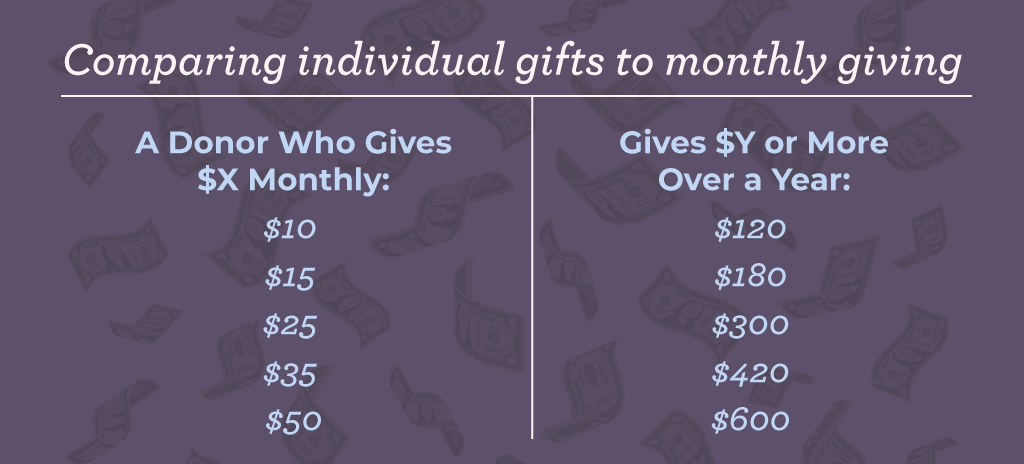
2. Monthly Giving and Sustaining Impact
2019 was the year monthly giving really started to catch on in the fundraising world. Now, even Facebook prompts donors who give through their fundraising platform to make their gift monthly!
As retention and acquisition rates continued to fall year after year, nonprofits sought a way to stop the bleeding. Monthly giving was the answer. And it may just be the future of fundraising!
It’s so important, we even hosted a Monthly Giving Seminar in October to help nonprofits get a program started!
According to data from Analytical Ones, a donor who makes a second donation within three months of their first has a 987 percent higher average value over five years than a donor who gives once in that span.
And you can actually raise more from a monthly donor in a year, while easing the burden on their own budget. A donor who gives $25 a month contributes $300 a year. And that’s before considering any additional, one-time donations they could make.
Monthly giving also provides room for growth. After a year, ask monthly donors to increase their support by just $5 or $10 per month. A donor giving $35 per month contributes at least $420 in a year. As a fundraiser, you know it sounds easier to ask for just $10 more per month, than a $120 increase!
But your monthly giving program can also get new donors in the door, so you can build a relationship with them and increase their support over time.
Using monthly giving to attract new, younger donors was a key lesson nonprofits learned in 2019. Consider that a millennial may not have $50 to give at the end of the year. However, they can probably find room in their budget for $5 per month.
And be sure to make the benefits of monthly giving clear for your donors. Let them know how this initiative helps sustain your organization’s impact throughout the year, so you can continue to make a difference.
3. Mid-Level Donors
According to Nonprofit Pro, mid-level donors can account for 40 to 50 percent of a nonprofit’s total revenue, despite only making up 5 to 10 percent of their donor base.
So, what have you been doing to retain this group and upgrade your most engaged low-level donors to a higher giving level?
Focusing on mid-level donors was an important lesson nonprofits learned in 2019. If this group is suffering from middle-child syndrome, and not getting the attention they deserve, you’re going to struggle.
The first step is identifying who your mid-level donors are and which donors are good candidates to move up to this level. The mid-level will be different for every organization. So, you’ll need to go though your data and determine where to draw the lines.
You will also need to see what your mid-level donors have in common. Do they work in similar industries, or send their kids to the same private school? Or do they have similar hobbies, interests or lifestyles?
Psychographic information can help you identify other donors with the potential to join this group by increasing their support.
Then, build a special communications track for mid-level donors. Express your gratitude for their past support by offering special perks. Show them the impact they’ve made over time and explain what you can accomplish together with an even bigger gift.
Your nonprofit should be retaining mid-level donors at a higher rate than the average donor. If this is not the case, take a lesson from nonprofits who made mid-level donors a priority in 2019.
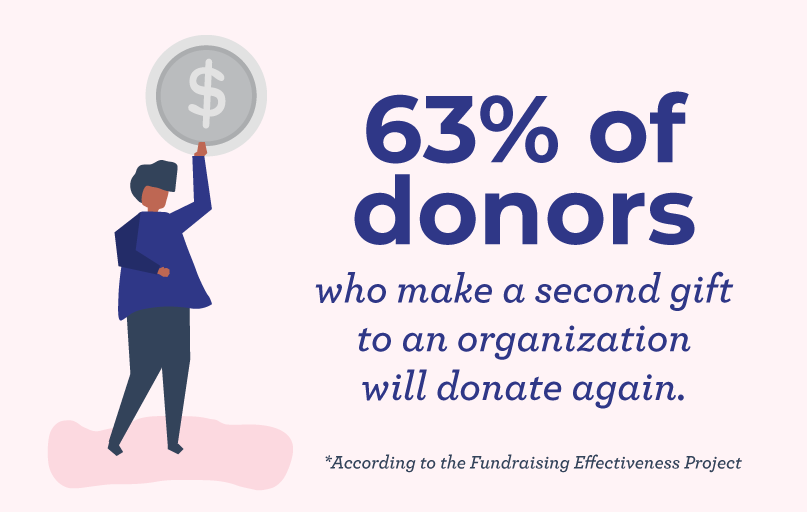
4. Retention Over Acquisition
The three previous lessons nonprofits learned in 2019 all have one thing in common. They put an emphasis on retaining the donors you already have. This isn’t a coincidence.
Some say that you can’t put a price on loyalty. But we beg to differ! According to Bloomerang, it can cost 50 to 100 percent more to acquire a new donor than you will raise from their first gift.
Remember, only 19 percent of first-time donors make a second gift, while 63 percent of donors who make a second gift will give again, according to the Fundraising Effectiveness Project.
So given these numbers, we’ll let you draw your own conclusions.
Of course, we’re not saying that you should neglect donor acquisition all together! Remember our points in the section on monthly giving.
However, you shouldn’t be so focused on finding new donors that you fail to build relationships with the ones you already have! You will get more bang for your buck by focusing on retaining and upgrading the donors who are already engaged.
And when you do get a new donor, do everything you can to keep them! Make sure you thank them quickly after they give.
Then maintain contact. Supporters should hear from you in between appeals. So, reach out to welcome them into your family, ask for their feedback and update them on your mission’s progress. Get them excited about your organization’s work and make them feel at home before asking for another donation.
It’s Not Too Late!
Fundraising is not the same as it was five years ago. The world around us continues to change. The messages we hear everyday are getting louder and more frequent. It’s getting harder for nonprofits to get their message out in the crowd.
It’s OK if you didn’t adopt monthly giving or take steps to be more transparent with your donors this year. The lessons nonprofits learned in 2019 are a direct result of the rapidly evolving fundraising landscape.
And these lessons are being learned the hard way. For example, organizations wouldn’t be rushing to get started with monthly giving if poor donor retention wasn’t a huge concern!
Nonprofits that have faced these challenges already and came up with a way to address them are the early adopters. It’s not too late for your organization to learn from them, and start the new year on fundraising’s front line!

